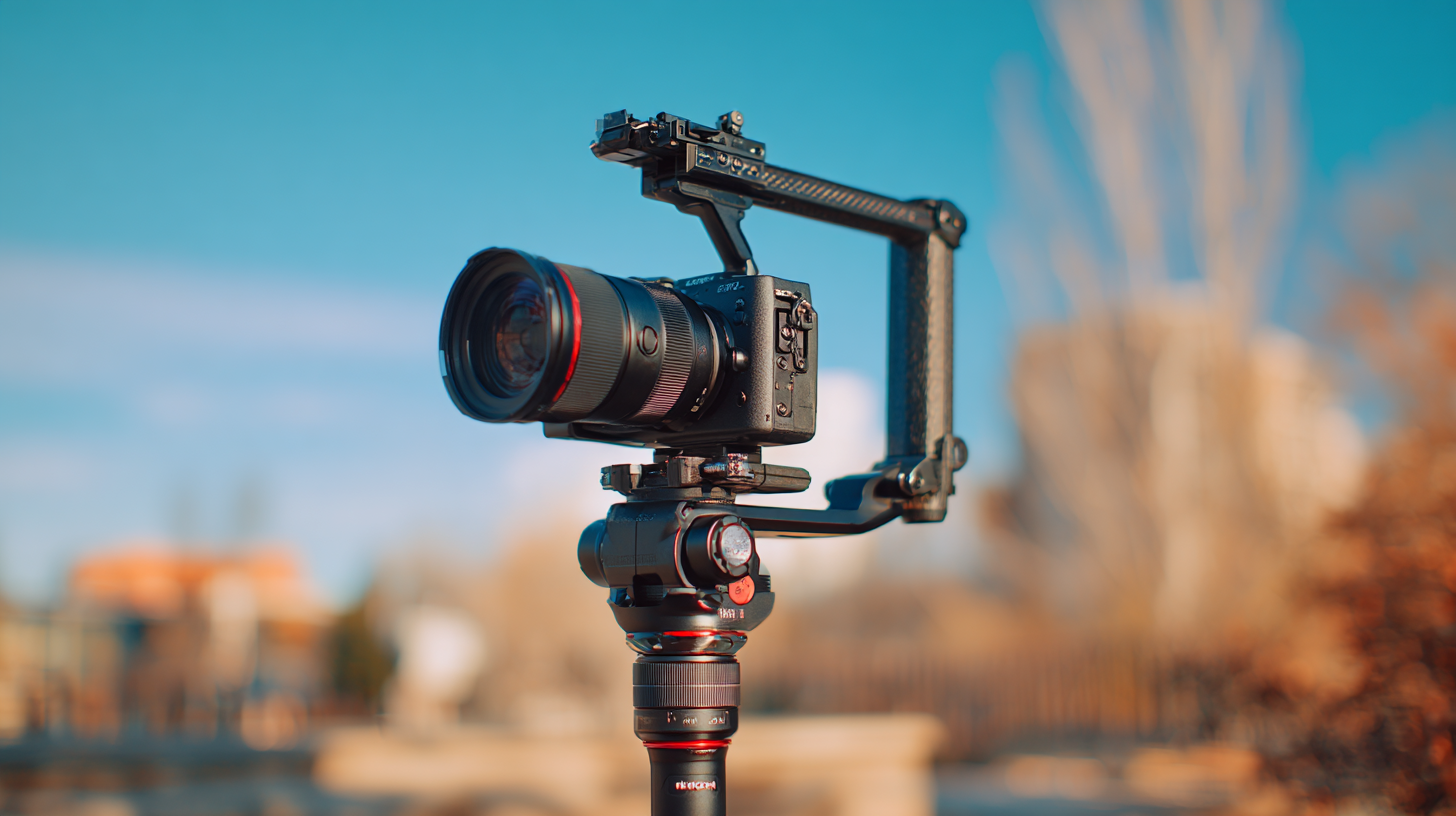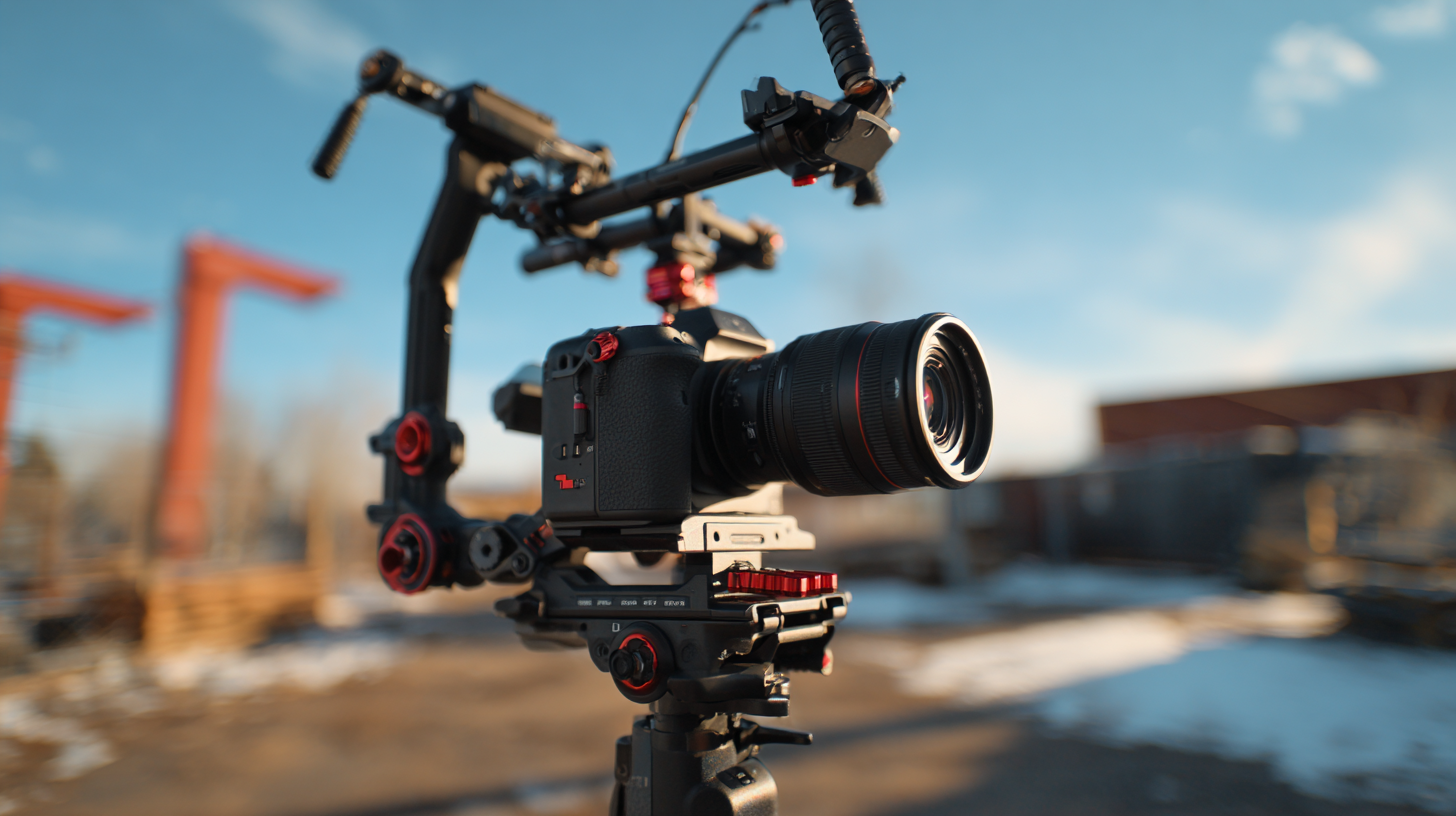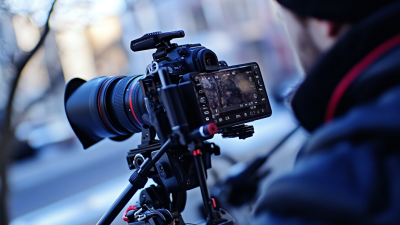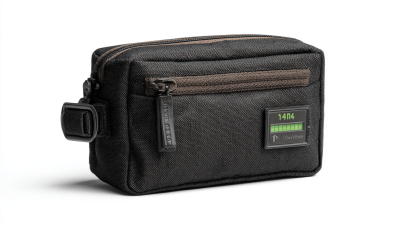When it comes to capturing stunning visuals, the importance of a Professional Camera Stabilizer cannot be overstated. Whether you're a seasoned filmmaker or an enthusiastic hobbyist, mastering your shots requires the right tools to ensure smooth and steady footage. In this ultimate guide, we will explore the various types of camera stabilizers available in the market, along with essential tips for choosing the best one to suit your needs. From gimbals to steadycams, understanding the benefits and features of each type will empower you to make informed decisions that elevate your cinematography. Get ready to delve into the world of stabilization technology and discover how a Professional Camera Stabilizer can enhance your creative work, allowing you to focus on the art of storytelling without the distraction of shaky footage.

In professional videography, camera stabilization is not just a technical enhancement; it’s crucial for delivering high-quality visuals. According to the 2022 "State of Video Marketing" report by Wyzowl, 85% of businesses use video as a marketing tool, highlighting the necessity for stable footage to maintain viewer engagement. Shaky or unsteady video can distract audiences and detract from the storytelling experience. Effective stabilization methods, such as gimbals and steadicams, are pivotal in achieving smooth, cinematic shots that keep viewers focused on the content rather than the motion.
Moreover, a survey conducted by the American Society of Cinematographers revealed that 94% of industry professionals consider stabilizers essential for dynamic shots, particularly in fast-paced environments like action scenes or documentary filming. The right camera stabilizer not only enhances image quality but also reduces post-production time, allowing videographers to focus more on the creative aspects of their projects. With the demand for high-quality video content on the rise—projected to account for 82% of all internet traffic by 2026—investing in a reliable camera stabilizer has become a smart choice for those aiming to elevate their videography skills and meet market expectations.
| Stabilizer Type | Payload Capacity (lbs) | Price Range ($) | Battery Life (Hours) | Ideal For |
|---|---|---|---|---|
| 3-Axis Gimbal | 10 | 300 - 800 | 6 - 12 | DSLR & Mirrorless Cameras |
| Handheld Stabilizer | 15 | 100 - 250 | N/A | GoPros & Action Cameras |
| Shoulder Rig | 20 | 250 - 500 | N/A | Video Cameras |
| Steadicam | 25 | 500 - 1500 | N/A | Film Cameras |
| Drone Stabilizer | 5 | 700 - 2000 | 30 | Aerial Videography |
When it comes to achieving smooth, professional-quality video, choosing the right camera stabilizer is crucial. Gimbals, Steadicams, and sliders each offer unique advantages tailored to specific shooting scenarios. Gimbals use electronic motors to balance the camera on multiple axes, allowing for dynamic movement without compromising stability. They're ideal for fast-paced action shots, providing flexibility for both handheld and mounted setups.
On the other hand, Steadicams rely on a mechanical system that suspends the camera to absorb unwanted motion. This technique is particularly effective for long scenes where the operator must navigate through tight spaces. By learning to walk smoothly with a Steadicam, filmmakers can create captivating, flowing shots that maintain visual integrity.
Finally, sliders are excellent for achieving precise, linear movement. Perfect for establishing shots or intimate close-ups, sliders allow for controlled panning and tilting that can elevate any production. Each type of stabilizer has its place in the arsenal of a videographer, making it essential to understand their functions and choose the one that best suits the creative vision.
When selecting a professional camera stabilizer, several key features are essential for achieving optimal performance. According to the 2021 Camera Stabilization Report by the Imaging Technology Association, 45% of professional videographers cite stabilization as a critical factor in their workflow efficiency. First and foremost, the stabilizer's weight capacity must be compatible with your camera setup. Most stabilizers can support a range between 3 to 10 kg, but models like the DJI Ronin-S can accommodate heavier rigs, making it a favorite among filmmakers.
Moreover, look for features such as brushless motors and 3-axis stabilization. These elements are crucial for minimizing shake and ensuring smooth movement, even during dynamic shooting conditions. The same industry report highlights that stabilizers with advanced algorithms reduce unsuccessful shots by up to 30%, significantly enhancing post-production timelines. Battery life is another vital aspect; models boasting at least 12 hours of operation enable uninterrupted shoots, which is indispensable for location projects. Investing in a stabilizer that incorporates these features not only improves your video quality but also enhances your overall production efficiency.

When selecting a professional camera stabilizer, understanding the impact of weight and size on stability and maneuverability is crucial. According to a report by the Imaging Resource Association (IRA), stabilizers that weigh between 1.5 to 3.5 pounds are optimal for handheld shooting, providing a balance between stability and ease of maneuverability. Heavier stabilizers, while effective in reducing vibrations, often limit rapid movements and can lead to user fatigue during extended shoots. A study by the American Society of Cinematographers (ASC) highlights that a lighter stabilizer significantly improves the operator's ability to achieve fluid motion, essential for dynamic shooting environments.
In terms of size, compact stabilizers allow for greater versatility, especially in tight spaces or when navigating through crowds. The ASC notes that a stabilizer with a smaller footprint can enhance the ability to capture spontaneous moments without sacrificing footage quality. Additionally, data indicates that users favor stabilizers that can be adjusted quickly, as these features contribute to a more efficient workflow on set. In contrast, larger stabilizers, while more stable for wide shots, can prove cumbersome in fast-paced scenarios where agility is critical. Choosing the right stabilizer involves finding the perfect balance between size, weight, and the specific shooting requirements of each project.
As we delve into 2023, the camera stabilizer market continues to witness transformative innovations driven by technological advancements and evolving consumer preferences. Recent industry reports indicate that the global handheld imaging market is projected to reach a staggering $215.6 million by 2025 and is expected to surge to $326.14 million by 2033. This growth underscores the increasing demand for stabilizers that enhance video quality and ease of use, enabling creators to achieve cinematic shots with minimal effort.
The competitive landscape of the handheld intelligent imaging equipment sector is becoming increasingly diverse, dominated by key players in specific niches, such as panoramic cameras and action cameras. According to insights, this competitive landscape is marked by significant market share concentration, highlighting the strategic positioning of major brands. As companies continue to innovate, they are focusing on integrating advanced stabilization technologies that cater to both amateur videographers and professional filmmakers alike, ensuring that the market evolves in response to user needs and industry trends. In this dynamic environment, collaboration and competition are intertwined, shaping the future trajectory of camera stabilizer technologies.







